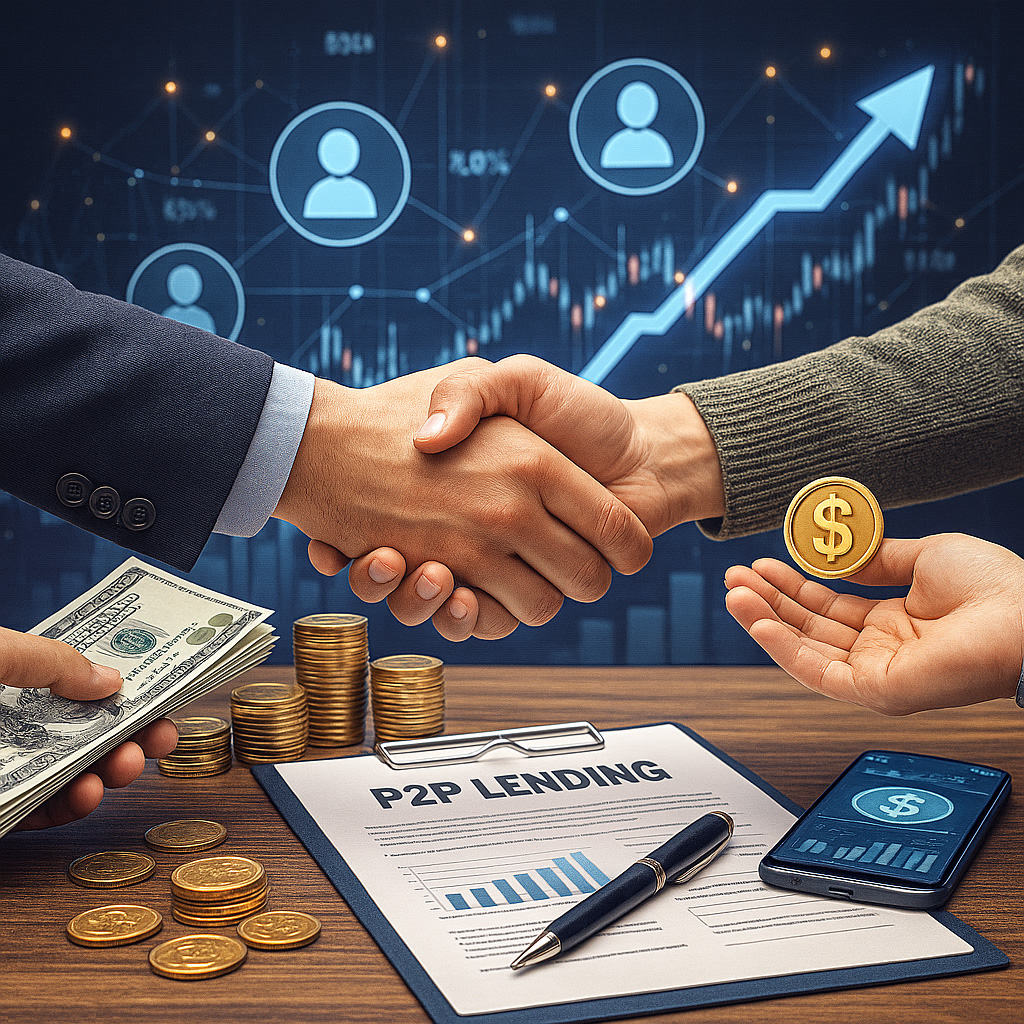P2P Lending 2025: Exclusive Guide to Effortless Borrowing
In the rapidly evolving landscape of finance, p2p lending has emerged as one of the most innovative and accessible ways to borrow and lend money. By 2025, this model is expected to revolutionize the borrowing experience further, making it more effortless, transparent, and efficient for everyone involved. Whether you’re a borrower looking for a flexible loan option or an investor seeking alternative income streams, understanding the trends and mechanisms behind p2p lending is crucial.
Understanding P2P Lending: The Basics
At its core, p2p lending, or peer-to-peer lending, is a method of lending money directly between individuals or businesses without the involvement of traditional financial institutions such as banks. This system is generally facilitated through online platforms that connect borrowers with investors, enabling more competitive rates and quicker approvals.
Unlike conventional loans, p2p lending usually offers more flexible terms, lower interest rates for borrowers, and higher returns for investors compared to standard savings products. The use of technology and data-driven underwriting also allows for better risk assessment, making the lending process smoother and more inclusive.
Why P2P Lending Will Dominate in 2025
Technological Advancements Driving P2P Lending
By 2025, technological progress will further streamline the p2p lending process, leading to what could be described as “effortless borrowing.” Artificial Intelligence (AI) and machine learning algorithms will play pivotal roles in evaluating creditworthiness instantly, reducing the need for extensive paperwork and lengthy approval times. Borrowers will enjoy faster, near-instant loan decisions through mobile apps and online portals.
Additionally, blockchain technology may be integrated into p2p platforms to ensure secure, transparent transactions and reduce fraud risk. This tech-driven overhaul will make borrowing simpler, safer, and more accessible globally.
Increased Regulation: Balancing Safety and Flexibility
As p2p lending gains traction, regulators worldwide are expected to introduce clearer guidelines aimed at protecting lenders and borrowers alike. These regulations will enhance trust in p2p markets without stifling innovation. As a result, potential borrowers will feel more confident engaging with p2p lending platforms, leading to significant market growth.
How to Borrow Effortlessly with P2P Lending in 2025
Step 1: Choose the Right P2P Platform
Selecting a reputable and user-friendly p2p platform is the first crucial step toward an effortless borrowing experience. Look for platforms that offer transparent terms, quick application processes, and competitive interest rates. Many platforms will offer mobile-first experiences in 2025, allowing borrowers to manage everything from initial application to repayment on their smartphones.
Step 2: Complete a Simple Online Application
One of the key benefits of p2p lending is minimal bureaucracy. Most platforms only require essential information such as income proof, identification, and credit history. Enhanced AI analytics will help pre-validate income and risk metrics so borrowers can avoid lengthy manual reviews.
Step 3: Get Fast Approval and Flexible Loan Options
Unlike traditional loans, p2p lending platforms often provide multiple loan sizes and terms, allowing borrowers to pick what best suits their financial goals. With AI handling real-time credit checks, loan repayments, and default risk assessments, approval may happen within minutes or a few hours.
Step 4: Secure Funds Quickly and Manage Repayment Easily
Once approved, funds can be disbursed directly into the borrower’s bank account or mobile wallet, sometimes as fast as the same day. Platforms are also likely to include automated reminders and easy-to-use repayment schedules, making ongoing management hassle-free.
The Benefits of P2P Lending for Borrowers and Investors
For Borrowers:
– Lower interest rates compared to traditional personal loans or credit cards
– Faster loan approval and disbursement
– Flexible loan amounts and repayment terms
– Accessibility for borrowers with moderate credit scores who may be underserved by banks
For Investors:
– Attractive returns compared to conventional savings or fixed-income products
– Diversification opportunities by investing in loans across sectors and risk categories
– Transparency through trackable loan performance data
– Empowering individuals by giving their capital purpose and impact
Final Thoughts: What to Expect from P2P Lending in 2025
As the p2p lending industry matures, the borrowing process will become increasingly seamless and automated. Combined with better technology, stronger regulations, and expanding market acceptance, this financing method will provide unparalleled accessibility and convenience for borrowers worldwide.
Those seeking quick, affordable credit will find p2p lending platforms to be an ideal solution, blending the agility of digital tools with the advantages of direct lending. By embracing these changes and understanding how p2p lending works, borrowers can look forward to a new era of effortless borrowing by 2025 and beyond.
—
If you want to stay ahead, keep an eye on emerging platforms, regulatory updates, and tech innovations in the p2p lending space—they will define the future of personal finance.
